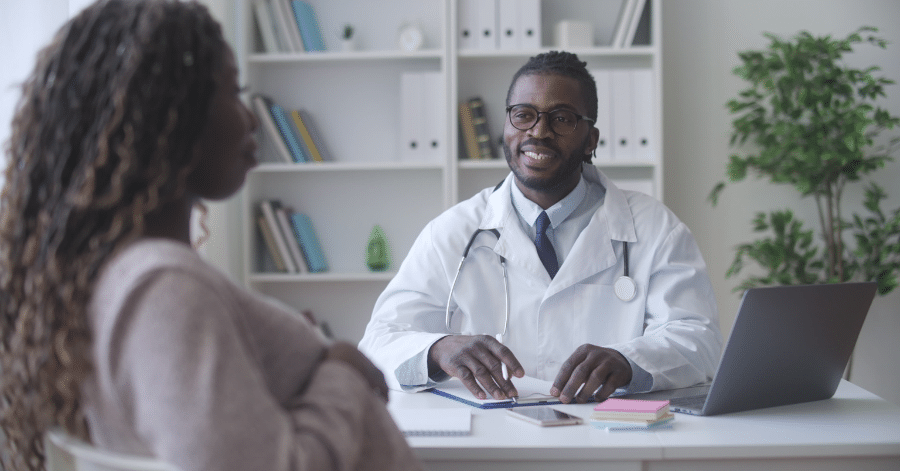Discover the impacts of endometriosis on pregnancy, from conception to delivery. Learn about potential complications and how to manage them. Including treatment options and lifestyle changes that can help.
Can I Still Get Pregnant If I Have Endometriosis?
When the tissue that normally lines the inner walls of your uterus grows outside of the organ, you have an often painful disease known as endometriosis. This out-of-place tissue continues to function as it would if it were in the uterus. It gets thicker to prepare for possible pregnancy and breaks down and sheds during menstruation.
However, there’s no way for it to leave the body as it normally would, which creates pain and other complications over time. One of these complications is fertility issues. According to the Office on Women’s Health, about 40% of women who are having trouble conceiving also have active endometriosis.
About 5 million women in America have endometriosis, so that’s about 2 million who have difficulty becoming pregnant. While endometriosis can make pregnancy difficult, it’s still possible to conceive and deliver a child.
Pregnancy and Endometriosis – The Mysteries of Endometriosis
The precise cause of endometriosis isn’t known, and there’s much about the disease that still raises questions. However, there’s been much research into the condition, and while it’s still not fully understood, medicine can navigate around endometriosis with greater confidence.
Over 30% of women with endometriosis do get pregnant naturally, without any medical intervention, so having the condition doesn’t immediately rule out pregnancy. It depends more on how the problem manifests itself in each case.
Pregnancy and Endometriosis – How Endometriosis Can Affect Fertility
Where endometrial tissue takes hold outside of the uterus is perhaps the biggest roadblock to pregnancy, and it’s quite literally a roadblock. Misplaced endometrial tissue can physically block both sperm and egg, meaning fertilization can’t take place. Even if fertilization occurs, endometrial tissue can prevent a fertilized egg from reaching the uterus.
An egg can even embed in the misplaced tissue, a condition called ectopic pregnancy. Endometriosis can also affect fertility by changing your body’s hormone balance. Your immune system may struggle with endometriosis and attack a fertilized egg in error, or it may cause irregularities in normal endometrial tissue in the uterus.
Pregnancy and Endometriosis – Fertility Treatments
Your doctor assesses your fertility, and if irregular hormone levels are found during testing, hormone therapy can address them. Adjusting hormone levels could normalize your ovulation cycle and make it easier for you to conceive naturally.
In vitro fertilization and other fertility treatments, such as intraun to assure the presence of an egg. When endometriosis blocks the path through your Fallopian tubes, uterine insemination may be viable. That technique may be paired with controlled ovarian stimulation surgery to remove the tissue may improve your chances of pregnancy. Surgery can be successful up to 80% of the time, but it depends on how severe your endometriosis is. There can be complications from the surgery as well that create scar tissue or make your endometriosis symptoms worse.
Pregnancy and Endometriosis – Female Urinary Incontinence
Female urinary incontinence is more common than you think. Women often experience an extreme urge to urinate or leak a little urine when they laugh, sneeze, or exercise. Of course, urinary incontinence can be embarrassing and frustrating, but it’s completely normal and extremely common.
Research suggests up to 25% of young women, 44-57% of middle-aged women (including post-menopausal women), and 75% of older women experience some involuntary urine loss. Women do have a much higher incidence of urinary incontinence compared with men, and there’s plenty you can do about it.
Types of Urinary Incontinence
Urinary incontinence isn’t just a singular problem. You may suffer from different types or a combination of types. Sometimes, incontinence results from a functional reason — such as arthritis. You just can’t make it to the restroom in time or unbutton your pants quickly enough.
Urge incontinence results from abnormal contractions of the bladder muscle. You feel an immediate, intense urge to use the restroom followed by an involuntary loss of urine. You may experience urge incontinence in response to a urinary tract infection or as a result of a condition, such as diabetes.
Stress incontinence refers to leaking that occurs when you endure stress, such as laughing, lifting something heavy, or sneezing. This may result from mild damage to your pelvic muscles that occurs during pregnancy and childbirth or the effects of aging.
Overflow incontinence is another type that occurs when you have a constant dribble of urine, even after you’ve used the restroom. Usually, this is a result of a bladder that doesn’t fully empty.
Reasons for Incontinence
Women are more susceptible to developing urinary incontinence due to the stress of pregnancy and childbirth. While you’re carrying a baby, the weight of the fetus can put pressure on your muscles which causes stress incontinence. Labor and delivery weaken muscles responsible for holding your urine and make you vulnerable to organ prolapse — when the bladder, uterus, or small intestine get pushed down into your vagina.
As you get older, your bladder’s capacity may change and involuntary contractions of the bladder become more common. Menopausal women produce less estrogen, a hormone that promotes bladder lining and urethra health. A woman who’s had a hysterectomy may experience incontinence. Because the procedure may affect pelvic floor muscles that support and promote healthy bladder control.
Pregnancy and Endometriosis
Urinary incontinence is common, but at Advanced GYN Center, we’re available to reduce or resolve your symptoms. Something as simple as changing your diet and reducing caffeine intake. For example, it can help reduce urinary urges.
Other lifestyle changes, such as learning to double void, or urinate and then wait a few minutes and urinate again, help. Scheduling toilet trips and bladder training are ways we can help you learn to manage urinary incontinence and reduce frustrating incidents.
Vaginal support devices such as pessaries and slings may help in more severe cases. Physical therapy that builds up the muscles of the pelvic floor to help you better control contractions of the bladder and support urges also helps. In some cases, surgical intervention is the solution.
Navigating endometriosis can be difficult enough without the added complication of trying to conceive. The women’s health specialists at our Advanced GYN Center will assist you through these challenges. We review all the possible treatments for your urinary incontinence to help restore a normal quality of life. Call us or schedule a teleconsultation for practical and effective solutions to your incontinence issues. Get started on the road to a successful pregnancy today.











